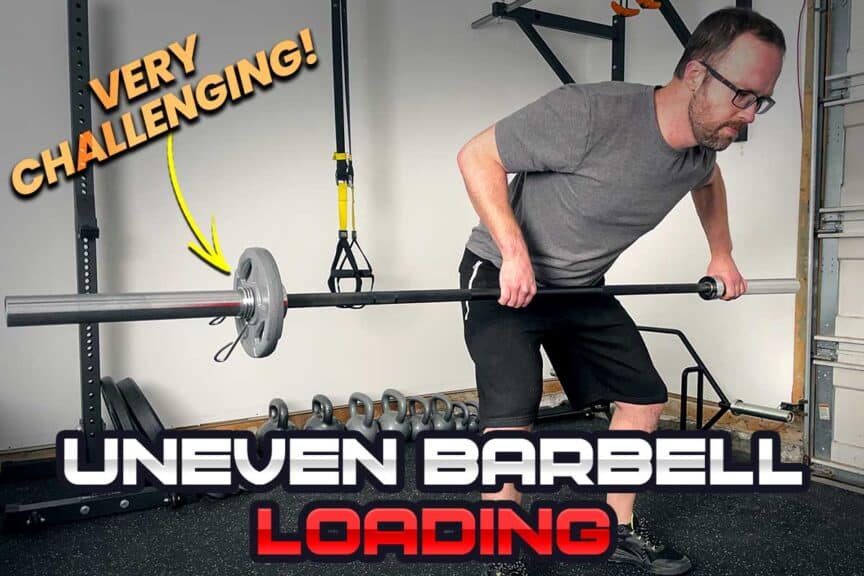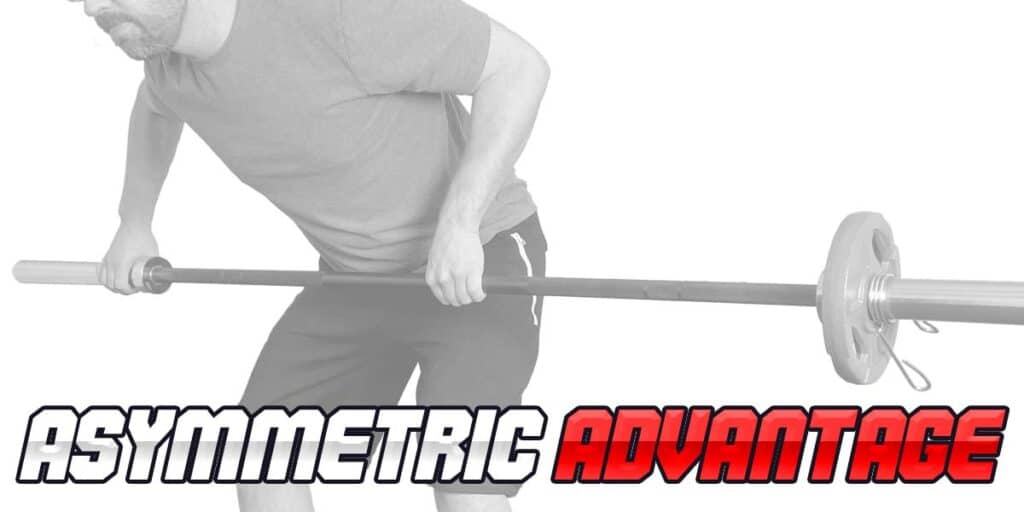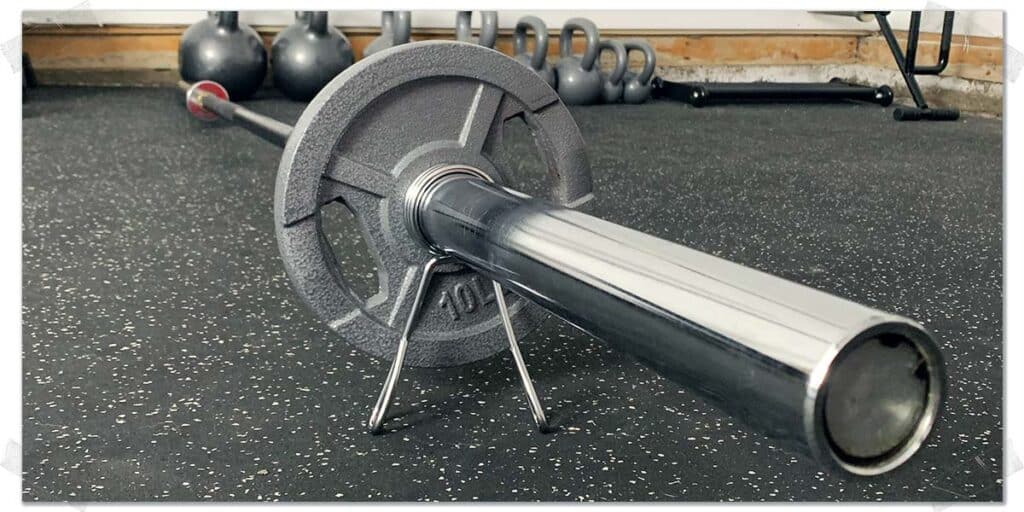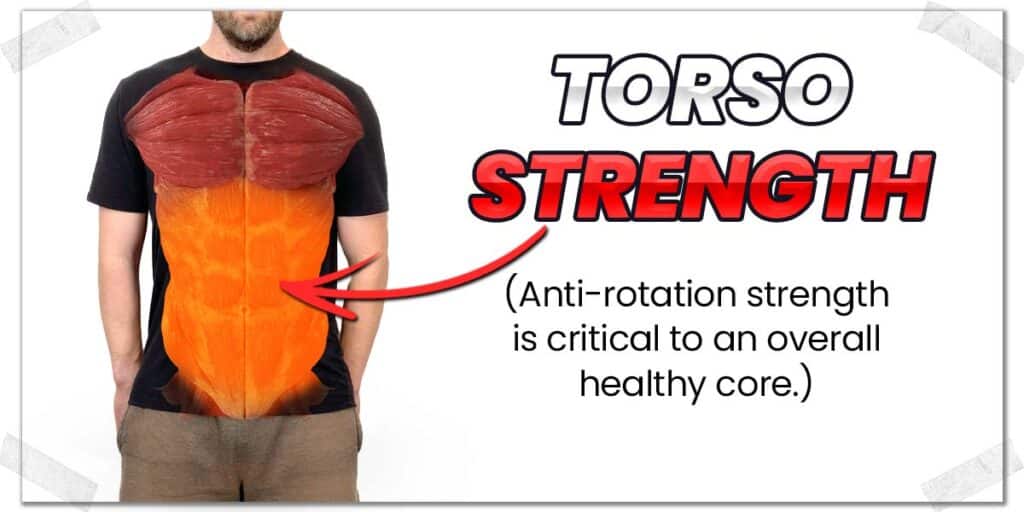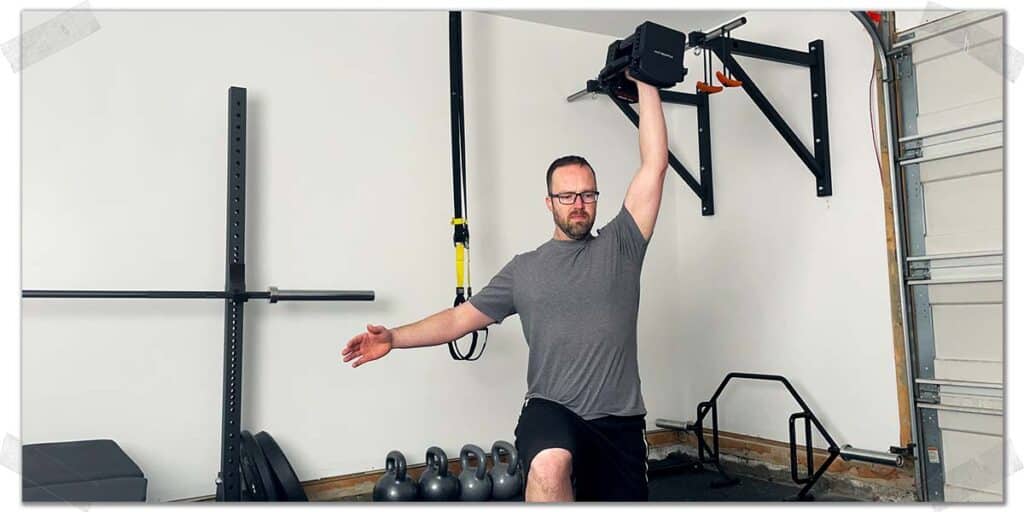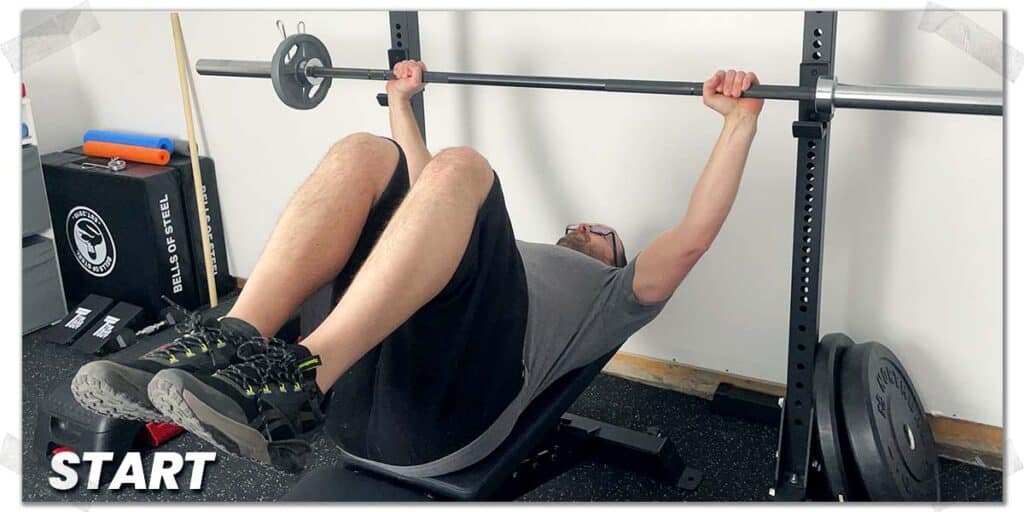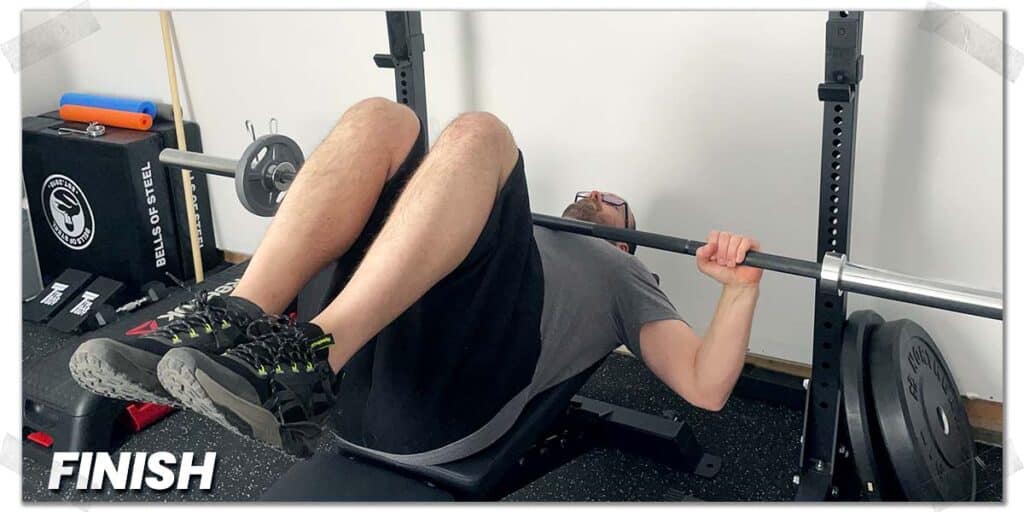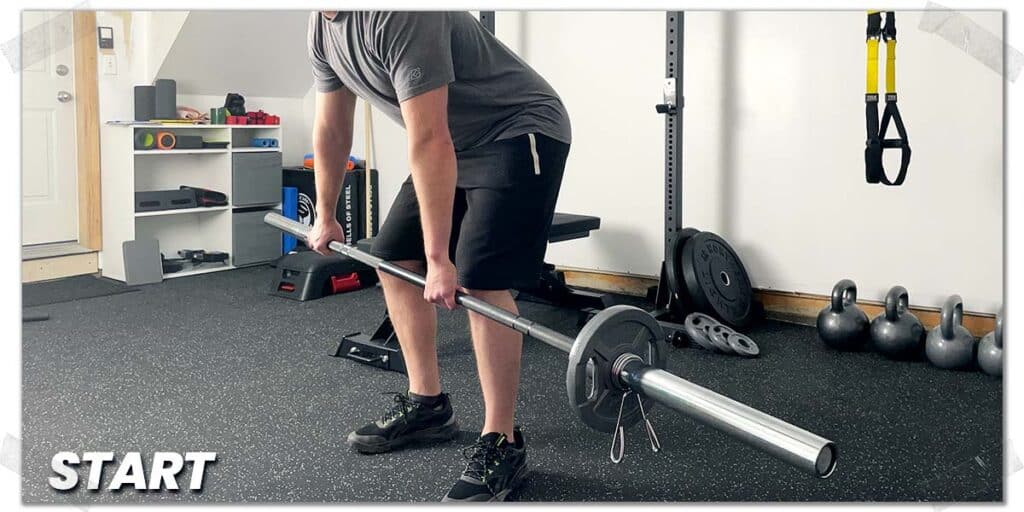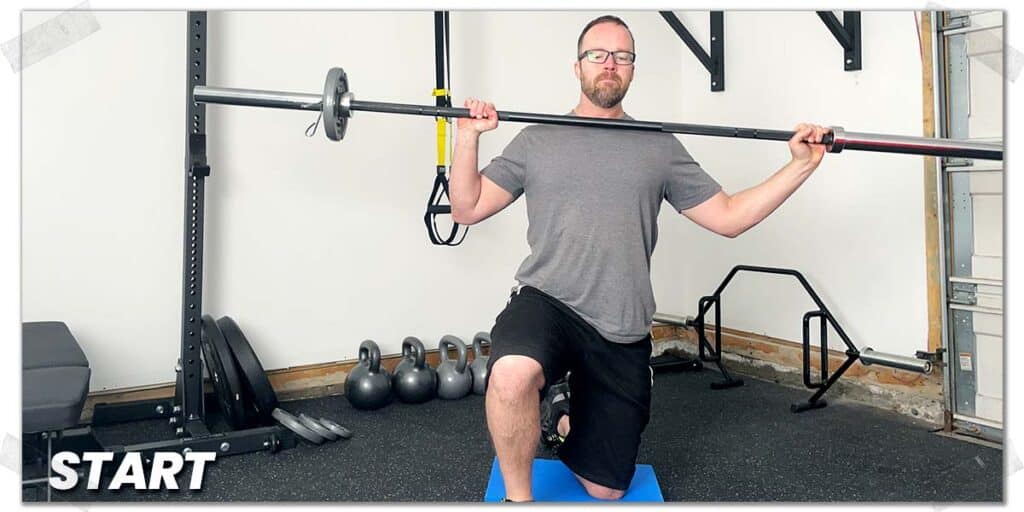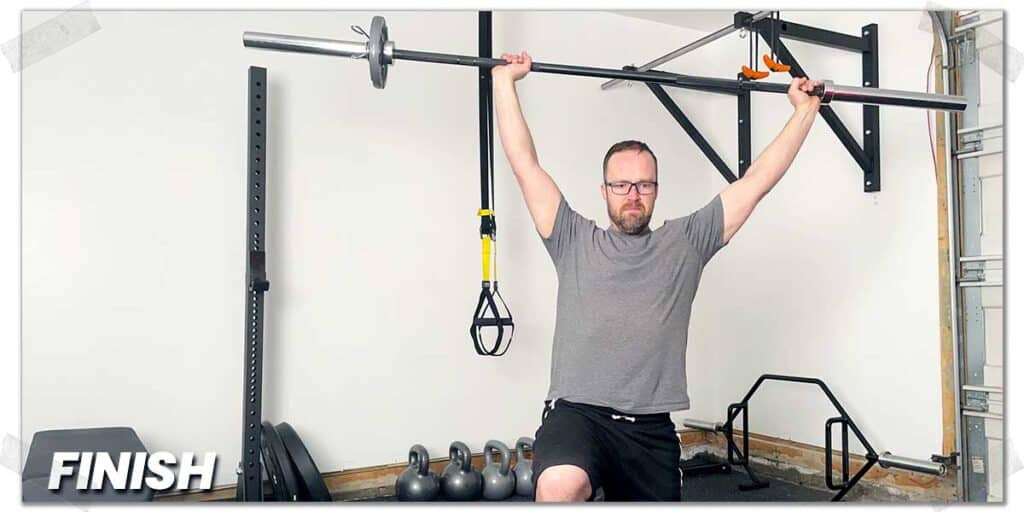Sometimes it can be incredibly beneficial to think outside of the box. Want an example? Try performing some of your strength training exercises with a non-centered grip on a barbell or with a bit more weight on one side than the other. You’ll get a workout like you wouldn’t believe and, when performed correctly, make yourself stronger and less injury-prone.
It may sound unconventional, but if you know how to do this correctly, you’ll reap some serious benefits that few others may incur with their training.
Uneven barbell loading or offset load training can immensely benefit athletes and individuals looking to develop a stronger core, prevent lower back injuries, and improve their movement control. The primary mechanism occurs through anti-rotation strengthening of the core muscles.
Now, there are some general rules and parameters to abide by (which I’ll outline below), as this training strategy needs to be incorporated prudently. But man, oh man, are there some seriously beneficial training adaptations that take place when done so.
So, let’s get to it
A small request: If you find this article to be helpful, or you appreciate any of the content on my site, please consider sharing it on social media and with your friends to help spread the word—it’s truly appreciated!
As we dive in here, remember that for the context of this article, uneven loading applies to the uneven loading of a barbell. You can, of course, perform uneven loading with dumbbells and kettlebells simply by having weight in only one arm or by using different weights in each arm, but this is not the strategy I’ll be discussing for this article – this article is all about creating a new world of challenges using a barbell.
Also, I must mention that there are plenty of times when uneven loading may not be worth it, either for particular exercises or for other circumstances unique to the lifter. For the times that are, it likely won’t take much of an imbalance to elicit the ideal effects; a mere five or ten pounds will most often suffice.
Keep on reading to see what I’m referring to.
Hidden Benefits of Uneven Load Training
I’ve got some ridiculously challenging (and rewarding) uneven barbell exercises for you to try, which I’ll get into shortly. However, before challenging your strength and movement control with them, let’s quickly discuss the hidden advantages of these exercises and, therefore, why you may want to consider implementing uneven load exercises into your training.
Benefit 1: Anti-rotation strengthening for the torso
Anti-rotation refers to the body’s ability to resist unwanted movement through the torso. While many athletes and other fitness enthusiasts work hard at training their core strength, they often only do so by training their muscles to produce movement rather than resist it.
Anti-rotation is all about forcing the core muscles to aggressively work as a means to prevent movement from happening, and it can be an outstanding principle to corporate into your training pursuits.
Using an uneven load to train your torso to resist movement will force deeper stabilizer muscles of your core, such as your transversus abdominis and multifidi muscles, to engage, which can be immensely helpful for injury prevention.
Related article: 5 Core Exercises WAY BETTER Than Russian Twists (Save Your Spine)
Additionally, your internal and external oblique muscles (responsible for producing rotational movement around your torso) will get hammered through their need to isometrically contract, meaning the muscles must hold a sustained contraction in a manner that (in this case) prevents movement from occurring.
Anti-rotation training can help you to:
- reduce or avoid the chances of incurring injury to your back, torso, and other areas of your body;
- produce greater whole-body stability when exercising or participating in athletic endeavours;
- incorporate new challenges into your training routines and reduce training stagnation or boredom.
Benefit 2: Anti-side flexion strengthening
Anti-side flexion refers to the same concept as anti-rotation, except rather than resisting rotation, the muscles of the torso are now resisting the spine bending to the side. This type of strengthening occurs when pressing an unevenly loaded barbell above the head (which we’ll go through in a moment) or when standing upright with an unevenly loaded barbell in your hands (arms down by your sides).
Ultimately, the benefits are the same as with anti-rotation; reducing injury potential by creating more torso strength, greater stability when fighting external forces acting on the body, and even making training more enjoyable with some added variety.
The main muscles that anti-side flexion training can strengthen include:
- the quadratus lumborum;
- the external and internal obliques;
- the multifidus muscle (on the side opposite to the heavier load).
Benefit 3: Balance and movement control
Training with an uneven load either across your body or on one side of your body will force you to move slowly and in a controlled manner.
For general strengthening exercises, the more offset or uneven your load is during any exercise, the slower the movement will need to be since it will require immense control and balance to successfully complete.
Related content:
Keep in mind this doesn’t apply to explosive single-arm movements, such as single-arm kettlebell swings or single-arm kettlebell or dumbbell snatches, which are to be performed explosively. We’re talking barbells here, after all.
As you fight through the demands of any exercises using an offset load, you’ll develop more intentional control of your movements, and you’ll notice an improved sense of balance as well, likely due to better anti-rotational control or anti-side-flexion control.
Not bad for merely keeping the load asymmetrical, eh?
Benefit 4: Different muscle recruitment and coordination patterns
If you think your muscles have it all figured out when it comes to bench pressing, try exercise 1 of this article and get ready to be taken for a ride. The same holds true for other exercises using this off-centered barbell technique.
When required to control an unbalanced load throughout an exercise, your muscles will be forced to work in an entirely different pattern from a balanced load; the agonistic muscles (the primary muscles) will be required to work; however, many accessory muscles will be forced to stabilize and control movements in an entirely different manner than if the load were even.
The results of these altered muscle recruitment patterns can yield significant benefits to muscles that typically aren’t stimulated to a great extent with traditional, symmetrical loading. In the end, it ensures that no muscle is left behind when it comes to fighting to move an unevenly loaded barbell in a controlled manner.
Related article: How to Use A TRX for Injury Prevention (Superior Benefits)
How to perform uneven barbell load training
Now that you know the benefits of this training strategy, we need to quickly run through what to expect and how to perform this technique. Like any other training strategy, there are some general principles to abide by.
Here’s a quick rundown of important rules and concepts:
- You can create an uneven load either by placing more weight on one end of the barbell OR by offsetting your grip (so that your grip isn’t symmetrical from side to side). You can also opt for both, though it may not always be necessary.
- the greater the offset in weight from one side to the other, the less overall load you’ll need on the barbell.
- Always start light or with a very minimally offset load; you can increase the overall load or discrepancy in weight once you’re familiar with the nature of the uneven exercise.
- Any exercises you attempt with an uneven load on the barbell should be performed slowly rather than quickly or explosively; they are great for strength training, but I wouldn’t use them for power/rate of force development training.
- It may be worth considering keeping the overall load to one that allows you to complete around ten repetitions; I wouldn’t load up to the point where you can only complete a few reps, at least, not until you’re well-versed and accustomed to this technique.
- The optimal amount of weight to use on the barbell will permit you to perform the exercise through a full range while maintaining strict form – it should be a fight to do both of these, but one that is manageable with concentration and effort.
So, now that you know the general outline and rules, let’s put this all into practice with a couple of exercises to try!
Exercise 1: Barbell bench press (feet up)
Get ready for a challenge. That’s all I can really say. Whether you use an offset grip on the barbell or simply load up one side of the barbell with a bit more weight than the other, you’re going to feel an immense anti-rotation challenge kick in through your core as you press the weight.
To perform this exercise:
- Lay on the bench and lift your feet off the floor.
- With either an offset grip on the barbell or with a few extra pounds of weight on one side, slowly perform your press. You will notice that the challenge of staying on the bench and not rotating off to one side becomes more difficult as you bring the weight lower to your chest.
- As you press the weight back up, keep fighting to keep your back flat and both hips on the bench (it’s not easy once you’ve dialled in the optimal load to use).
Pro tip: Though I will repeatedly mention the barbell bench press within this article, all of the issues I discuss also apply to the dumbbell bench press as well since the movements are largely the same. However, be sure to keep reading to learn why switching to the dumbbell bench press can help reduce shoulder pain under the right circumstances!
Exercise 2: Uneven barbell rows
There are numerous ways to experiment with uneven barbell rows. The method that I show and describe below is arguably my favorite; there’s an elaborate amount of anti-rotation that must take place to complete the movement, and the muscular coordination behind it is rather elevated as well.
To perform this exercise:
- Assume the standard position for a traditional bent-over barbell row. Again, you can either use an asymmetrical grip or a bit more weight on one end of the barbell.
- While maintaining a flat back and keeping your chest pointed directly at the ground, row the barbell upwards to your chest (the higher, the better). You’ll notice that one arm works harder to produce the row while the other arm works more so to stabilize the barbell as you fight to keep your torso from rotating.
- Slowly lower the weight back to the starting position while ensuring your torso does not rotate in the process.
Exercise 3: Half-kneeling barbell press
I’m a massive fan of the half-kneeling position (one knee on the floor) for exercises. It’s an under-utilized training position that holds numerous benefits for athletes and active individuals. It also helps ensure good spinal position throughout most movements. This is especially true for this particular barbell shoulder press.
To perform this exercise:
- Assume the half-kneeling position (it doesn’t matter which knee is down since you will switch for your following set).
- Starting with the barbell around the height of your collarbone (I.e., the same starting height for a traditional military or shoulder press), press the bar directly above your head. Be sure to keep your torso upright throughout the press – don’t let it bend towards the heavier side.
- Slowly lower the bar back down to the starting position while keeping your torso upright.
Be sure to switch your stance for the following set while also switching up the side to which you have a heavier load with the barbell.
Final thoughts
When done appropriately, asymmetrical barbell loading can be immensely beneficial; it elicits improvements in core strength, reduces the potential for injury, and improves balance and movement quality while adding some variety to your training.
Be smart with it, and if you are, you’ll reap some beautiful rewards.
Frequently asked questions
To make this article as helpful as possible, I’ve included some rather brief answers to some frequently asked questions regarding using a different amount of weight on each end of a barbell when working out and exercising.

Hi! I’m Jim Wittstrom, PT, DPT, CSCS, Pn1.
I am a physical therapist who is passionate about all things pertaining to strength & conditioning, human movement, injury prevention and rehabilitation. I created StrengthResurgence.com in order to help others become stronger and healthier. I also love helping aspiring students and therapists fulfill their dreams of becoming successful in school and within their clinical PT practice. Thanks for checking out my site!

